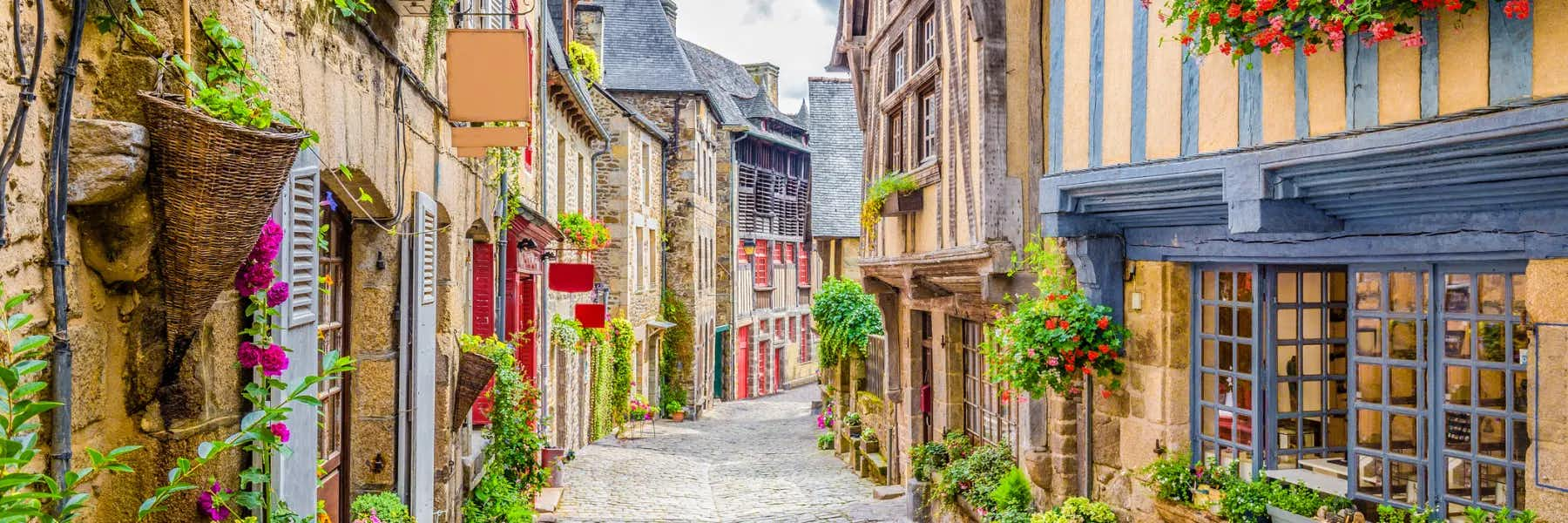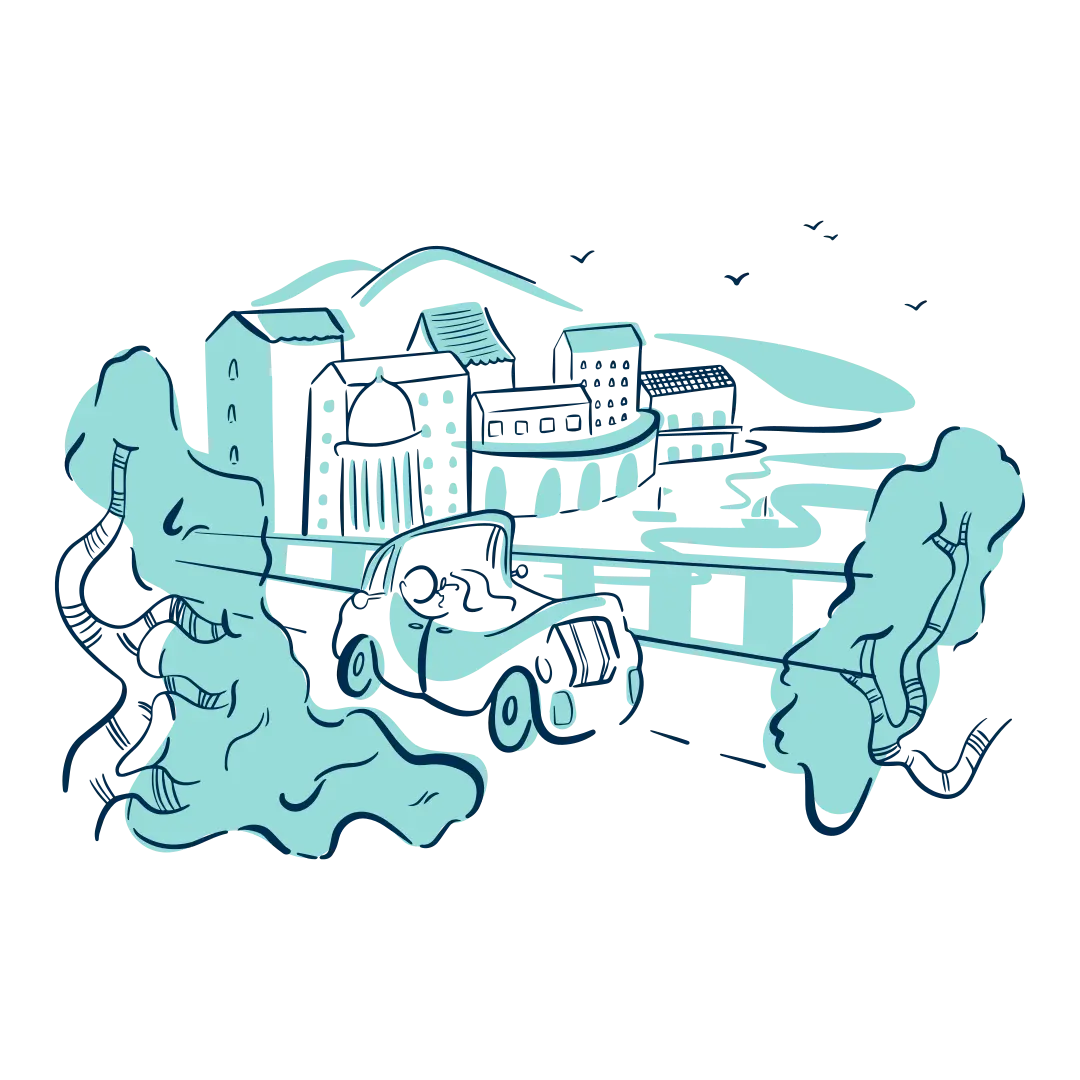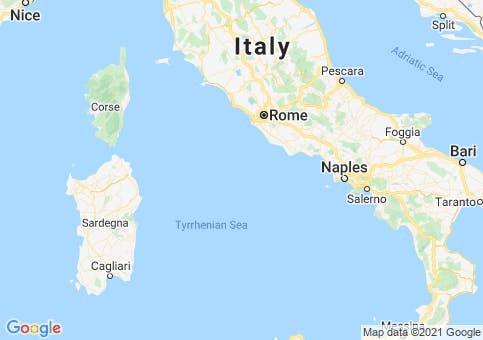Living in Italy is significantly less expensive than living in the U.S. The simplest reason is that housing and health insurance costs are much lower. But it doesn’t stop there.
The most important thing to remember is that if you have less in retirement savings than you’d like to enjoy life in the U.S, those funds can go significantly further if you plan to move to any country where the cost of living (COL) is less. It’s the primary reason many people first consider moving overseas.
In general, the COL in Italy can be 30% to 70% lower than the cost of living in the U.S., depending on where in Italy you want to live, and how you want to live. I said, “can be,” because if you choose to live in the fashion district of Milan, unsurprisingly, your costs would most likely rise, but outside of the larger metropolitan cities, your costs will noticeably drop.
Geographically, the further south you go, the lower the cost of living. The smaller the town, and the more agricultural the area the lower the cost of living.
My wife, Shonna, and I live in Central Italy, an hour and 30 minutes northeast of Rome, in an agricultural area, outside of the town of Reiti (less than 50,000 population). In a small town like Reit, with a population of 6800 people, our living expenses are less than $3,500 a month.
(Note: The cost of living comes down to lifestyle and what your overseas dream is; Italy provides something for everyone. Here are the best places to live in Italy from $1,700 per month.)
This fits perfectly in line with Italian statistics, as the average income per family in Italy is $31,641; in the north, it’s over $35,000, while in the south, under $26,000. We live in a larger home than most Italians, with higher utility use, and we eat out more than most Italians would.
Get Your Free Italy Report Today!
Get Your Free Italy Report Today!
Learn more about Italy and other countries in our daily postcard e-letter. Simply enter your email address below and we’ll send you a FREE report – Italy: Europe’s Most Seductive Country.

By submitting your email address, you will receive a free subscription to IL Postcards and special offers from International Living and our affiliates. You can unsubscribe at any time, and we encourage you to read more about our Privacy Policy.
Housing
When we first relocated to Rieti, we moved into a small three-bed, one-bath, 950 sq foot, fully furnished condo for $400 a month. Today, the landlord charges $500 for the same apartment. Two years after our move to Italy, we moved into a single-family home of over 2200 sq. feet, fully furnished with five bedrooms, three baths, and tremendous views for just $700 a month.
Finding condos or apartments to rent is easy, as most real estate websites in Italy will translate to English at the push of a button.
Here in Rieti, you can find apartments renting for as low as 420 per month for a small 800 sq foot two-bed, one-bath unfurnished apartment. For €600, you can get a fully furnished, wood-paneled apartment of 750 sq feet, with a carport and a doorman, perched on the ski slopes of Terminillo.
Buying a home in Italy and in most of the EU is different, as bank’s stop offering mortgages at age 75. For example, if I was 74, the longest mortgage I could get would be one year.
But for cash, there are tons of well-priced homes on the market. In this area, you can find homes priced from €50,000, depending on your needs. Outside Rieti, near Contigliano, finding a home you can fix up for €45,000 is easy.
But a lot of people don’t want to deal with a fixer-upper, and that’s fine, you can still find some gFrom €250,000 on up, you can find new construction, refurbished farmhouses, fixer-uppers, and flashy condominiums on the top floor with views galore. It all depends on what you want.
Pricing is flexible, and we have found that word of mouth is often the best way to find the perfect spot. Tell everyone you know that you are looking and what you want. It may take some time, but you will find that dream home!
We pay renters insurance that includes earthquake protection for €284 a year or $341. This is $29 a month.
Food
Great tasting, fresh, and locally produced food is one of Italy’s finest assets, and I would guess that 90% of our food comes from within 20 kilometers or less of our home. We live in a rural, agricultural area because fresh food without preservatives is important to us.
We have found our cost of eating here, for healthier food is about the same as in the US. We spend €600 ($720) a month on in-house eating, and only buy fresh and biodegradable foods where possible.
Here’s some examples of everyday food costs in Italy:
| Special K Granola | €3.19 |
| Philadelphia Cream Cheese | €2.56 |
| Three fresh tomatoes | €1.06 |
| Six Bananas Del Monte | €2.54 |
| Scamorza Cheese | €2.40 |
| Lemon Yogurt | €1.69 |
| Carrots | €1.48 |
| Two Italian Avocados | €1.98 |
| A bag of Nachos | €1.64 |
| Tomato Sauce – Jar 1 | €1.67 |
| Six Eggs – local | €2.75 |
| Box of Crackers | €2.89 |
| Almond Milk – Qt | €3.95 |
| Lean Ground Beef | €4.76/lb. |
| Turkey breast | €5.44/lb |
| Spaghetti box (gluten-free) | €2.98 |
One of the first things we learned was to take advantage of store savings cards or coupons. Go to the same store(s) every time. Italians are interested in their customers; the more you speak with them, the more they will trust and help you!
Dining out depends entirely on the type of restaurant you want—a slice of pizza costs 1$, a glass of beer $1.50, and that can be a meal. You can eat well from $15 to $50 a person, depending on what and where you want to eat. Yesterday, we spent $70 on takeout: Caprese salad, Caesar salad with chicken, fried onion rings, fried olives, fried cheese poppers with jalapenos, fried mozzarella, a hamburger (loaded) with fries, and a side order of fries and gelato (ice cream) with sauce in a pastry for dessert. This take-out will last us two meals. So, the cost per person was about $17.50.
Get Your Free Italy Report Today!
Get Your Free Italy Report Today!
Learn more about Italy and other countries in our daily postcard e-letter. Simply enter your email address below and we’ll send you a FREE report – Italy: Europe’s Most Seductive Country.

By submitting your email address, you will receive a free subscription to IL Postcards and special offers from International Living and our affiliates. You can unsubscribe at any time, and we encourage you to read more about our Privacy Policy.
Transportation
The first six months we were here, we either walked everywhere, or used public transport, mostly buses and trains. The buses are low cost (€10 ($12) for an hour and a half return trip to Rome), clean, and run on time. We’ve also used trains to go to Milan, Naples, and other cities. Trains are inexpensive and usually run to the minute on time. A round trip from Rome to Naples usually costs €26, ($32)
Our experience with using taxis has been fabulous. They’re regulated, and we thought they were inexpensive. We even got free rides around the driver’s neighborhood when he discovered we were Americans and wanted to show us his Rome.
Strikes do happen, but we always find a workaround, and most of the time, even the strikers include workarounds in the strike. They want to make a point, not leave anyone stranded.
Gas/Diesel — $168 for two tanks per month
Insurance — $1000 per year.
After being here for six months, we purchased a car. We paid cash for our five-year-old Volvo, though credit through banks is possible with proper proof of ability to pay. We have found repairs generally inexpensive. I.E., the low light on the passenger side headlight went out, and it took 10 min and €10 to fix it. Annual maintenance: oil, filters, fluids, lube, etc., is about $150, and the bi-annual tax on my car is €230 – about $320. Total car expenses add up to around $298/mo.
Wherever you decide to live, you’ll find excellent bus transportation at a minimum, and most of the time, you will also find trains available. Remember, the average Italian uses bus, train, taxi, or subway (in the city) as their normal mode of transportation. Schools don’t have a bus system, so children use public systems too.
Utilities
Utilities are the most expensive part of the budget, as they involve electricity, gas, wood, solar, and pellets, depending on where you live. When we lived in a condo, it was electricity and gas, and now in an independent home, we have wood, pellets, solar, gas, and electricity.
Here are some examples of our utility costs:
$120 for one cord of wood (we buy one cord a season)
$2,242 for 210 bags of 15Kg pellets ($187 per month)
$79 per month for gas.
$246 per month for electricity.
$150 per month for water (during the summer, our water is heated by solar)
All-inclusive per month, for internet, phone, TV, heat, electricity, water, and gas, we spend $804 a month on average.
| Wood | $10 |
| Pellets | $187 |
| Gas/Propane | $79 |
| Electricity | $246 |
| Water | $150 |
| Phones/Internet/TV | $132 |
| Total: | $804 |
Healthcare
In the U.S., we spent $1,460 a month with a $6000 deductible total, which did not include out-of-pocket costs.
In Italy, our Italian, nationwide insurance costs us (Shonna and me), just €748 ($898) per year. There are some out-of-pocket prescription costs, costing us about €600 a year or $720.
Our total costs for medical care are €1348 a year or $1618 or $135 a month.
Our level of care is excellent! We have an intimate knowledge of both the public and the private care system, as we have used both for operations, treatment, and ongoing care. We have found that the more specialized the doctor, the more likely they are to speak English. We estimate that we have saved over $100,000 in medical costs since we moved to Italy.
Once you have lived here for six months and have your Permisso de Soggiorno, and Carta Identita (local ID card), you qualify for the Italian National Health Insurance coverage. The cost varies, province by province depending upon age and/or income. Our cost is based solely on age, but the method used in this determination varies.
Get Your Free Italy Report Today!
Get Your Free Italy Report Today!
Learn more about Italy and other countries in our daily postcard e-letter. Simply enter your email address below and we’ll send you a FREE report – Italy: Europe’s Most Seductive Country.

By submitting your email address, you will receive a free subscription to IL Postcards and special offers from International Living and our affiliates. You can unsubscribe at any time, and we encourage you to read more about our Privacy Policy.
Like many other things: taxes, tickets, postal fees, and some insurances you pay at the post office, then take the receipt to the necessary entity.
Sample Monthly Budget
Here is our sample monthly budget for a couple living in Rieti, Italy:
| Housing | $869 |
| Food | $720 |
| Medical care/insurance | $135 |
| Utilities | $804 |
| Car Maintenance/Gas/Ins | $267 |
| Miscellaneous/Ent | $630 |
| Total: | $3,425 |
Here is a sample monthly budget for a single person living in Rieti:
| Housing | $600 |
| Food | $480 |
| Medical care/insurance | $100 |
| Utilities | $540 |
| Car Maintenance/Gas/Ins | $267 |
| Miscellaneous/Ent | $330 |
| Total – Single Person: | $2,317 |
Note: We tend to spend around $3500 a month in total as we like to travel, eat out, go to Rome, and generally enjoy ourselves. But it’s absolutely possible to get along on less. We also have pets and included them in Misc./Ent, and the cost of their food and vet bills.
*The euro/dollar exchange rate used here, at the time of writing, is €1 equals $1.2 dollars. *













